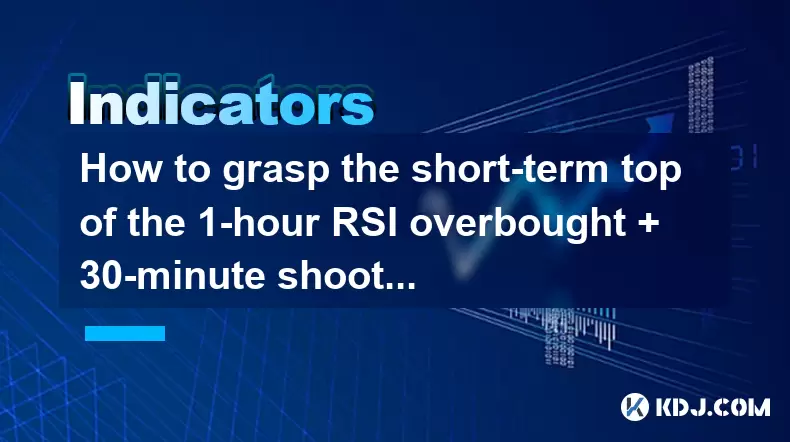-
 Bitcoin
Bitcoin $118000
0.67% -
 Ethereum
Ethereum $3750
0.71% -
 XRP
XRP $3.183
1.61% -
 Tether USDt
Tether USDt $1.000
-0.01% -
 BNB
BNB $788.1
1.21% -
 Solana
Solana $186.0
0.85% -
 USDC
USDC $0.9999
-0.02% -
 Dogecoin
Dogecoin $0.2373
1.25% -
 TRON
TRON $0.3204
1.76% -
 Cardano
Cardano $0.8266
1.85% -
 Hyperliquid
Hyperliquid $44.04
1.28% -
 Sui
Sui $4.192
5.88% -
 Stellar
Stellar $0.4399
2.63% -
 Chainlink
Chainlink $18.40
1.19% -
 Hedera
Hedera $0.2842
9.06% -
 Bitcoin Cash
Bitcoin Cash $560.5
2.46% -
 Avalanche
Avalanche $24.99
4.58% -
 Litecoin
Litecoin $114.5
1.25% -
 UNUS SED LEO
UNUS SED LEO $8.980
-0.03% -
 Shiba Inu
Shiba Inu $0.00001406
0.53% -
 Toncoin
Toncoin $3.306
4.27% -
 Ethena USDe
Ethena USDe $1.001
0.03% -
 Polkadot
Polkadot $4.169
2.37% -
 Uniswap
Uniswap $10.56
1.95% -
 Monero
Monero $322.8
1.06% -
 Dai
Dai $0.0000
0.00% -
 Bitget Token
Bitget Token $4.545
0.12% -
 Pepe
Pepe $0.00001261
1.29% -
 Aave
Aave $296.5
1.27% -
 Cronos
Cronos $0.1379
5.90%
How to grasp the short-term top of the 1-hour RSI overbought + 30-minute shooting star?
When the 1-hour RSI is overbought and a 30-minute shooting star forms, it signals potential reversal; confirm with resistance, volume, and bearish follow-through for high-probability short entries.
Jul 26, 2025 at 11:56 pm

Understanding RSI Overbought Conditions on the 1-Hour Chart
The Relative Strength Index (RSI) is a momentum oscillator that measures the speed and change of price movements. When analyzing the 1-hour RSI overbought condition, traders typically look for readings above 70 as a signal that an asset may be overvalued in the short term. An RSI value exceeding this threshold suggests that buying pressure has been strong, potentially exhausting bullish momentum. However, an overbought reading alone does not guarantee a reversal. It merely indicates that the market is in a stretched condition and vulnerable to a pullback. Traders must combine this signal with other technical cues to increase the probability of a correct trade setup. For example, divergence between price and RSI—where price makes a higher high but RSI makes a lower high—can strengthen the overbought signal and hint at weakening momentum.
Identifying the 30-Minute Shooting Star Candlestick Pattern
A shooting star is a bearish reversal candlestick pattern that typically forms after an uptrend. On the 30-minute timeframe, this candle appears as a small body near the lower end of the trading range, with a long upper wick and little to no lower wick. The long upper shadow indicates that buyers pushed the price higher during the candle’s formation, but sellers stepped in and drove the price back down, closing near the open. This rejection of higher prices is a sign of potential exhaustion in the bullish move. To confirm the validity of the shooting star, traders should check whether it appears after at least three consecutive green candles and whether it occurs near a known resistance level or Fibonacci extension. The presence of high volume during the shooting star formation adds further credibility to the reversal signal.
Combining RSI Overbought and Shooting Star for Entry Signals
When the 1-hour RSI is overbought and a 30-minute shooting star appears simultaneously, the confluence increases the likelihood of a short-term top. This dual confirmation works because it combines momentum analysis with price action. The overbought RSI suggests waning bullish strength, while the shooting star visually confirms seller dominance at a critical moment. To act on this signal, traders should wait for the shooting star candle to fully close before making any decisions. Once closed, assess the broader context: is the asset trading near a key resistance zone? Has there been a recent surge in volatility? These factors help determine the strength of the reversal setup. Entry for a short position can be considered on the opening of the next 30-minute candle following the shooting star, especially if that candle opens lower or forms a bearish candle such as a black marubozu or engulfing pattern.
Setting Stop-Loss and Take-Profit Levels
Risk management is essential when trading short-term reversals. For a short position triggered by this setup, the stop-loss should be placed just above the high of the shooting star candle. This level represents the point at which the bearish thesis is invalidated, as a breakout above it suggests renewed buying interest. The take-profit target can be determined using technical levels such as the nearest support zone, a prior swing low, or a Fibonacci retracement level (e.g., 50% or 61.8% of the recent upward move). Alternatively, traders may use a risk-reward ratio of at least 1:2, meaning the profit target is twice the distance of the stop-loss. For example, if the stop-loss is 20 pips above entry, the take-profit should be 40 pips below. Trailing stops can also be employed to lock in profits if the downtrend accelerates.
Monitoring Confirmation Through Lower Timeframe Candles
After entering a short position, it is crucial to monitor the subsequent price action on lower timeframes such as the 15-minute or 5-minute charts. Look for confirmation that selling pressure is continuing. This can include bearish candlestick patterns like bearish engulfing, dark cloud cover, or consecutive red candles with increasing volume. Additionally, the 1-hour RSI should begin to decline from the overbought zone, ideally breaking below 70 and continuing downward. If the RSI stalls or turns back up while price remains flat, it may indicate a false signal. Volume analysis is also helpful: declining volume during attempted rallies and rising volume on down moves support the bearish case. Avoid exiting too early unless a strong bullish reversal pattern forms, such as a hammer or bullish engulfing, accompanied by a drop in RSI momentum.
Common Pitfalls and How to Avoid Them
One major mistake is acting on the shooting star without waiting for the candle to close. Premature entries can result in false signals if the candle ends up closing within the body range. Another error is ignoring the broader trend: in a strong bull market, overbought RSI and single candlestick patterns may be ignored by price, which continues higher. Always assess whether the market is in a ranging, bullish, or bearish phase before assuming a reversal. Also, avoid trading this setup during major news events or low liquidity periods, as volatility can distort candlestick patterns and RSI readings. Lastly, do not rely solely on this strategy without backtesting it on historical data for the specific cryptocurrency pair being traded. Different assets exhibit different sensitivities to RSI thresholds and candlestick formations.
Frequently Asked Questions
What if the 1-hour RSI is overbought but the 30-minute shooting star doesn’t appear?
In this case, the overbought RSI alone is insufficient for a reliable reversal signal. Wait for price action confirmation such as a bearish engulfing pattern, a pin bar, or a break of a short-term trendline before considering a short. Momentum indicators require price confirmation to avoid false entries.
Can this strategy be applied to altcoins as effectively as to Bitcoin?
Yes, but with caution. Altcoins often exhibit higher volatility and may generate more false signals. Adjust RSI thresholds if necessary—some traders use 75 instead of 70 for altcoins to reduce noise. Always verify the shooting star with volume and resistance level alignment.
How long should I hold the short position after entry?
Hold until your predefined take-profit is reached or until a clear bullish reversal pattern emerges. Monitor RSI dropping below 50 as a sign of sustained bearish momentum. Avoid holding through major news releases unless hedged.
Is it necessary to use other indicators alongside RSI and candlesticks?
While not mandatory, adding tools like volume profile, moving averages, or MACD can improve accuracy. For instance, a shooting star occurring at a confluence of resistance and a 50-period EMA adds weight to the setup.
Disclaimer:info@kdj.com
The information provided is not trading advice. kdj.com does not assume any responsibility for any investments made based on the information provided in this article. Cryptocurrencies are highly volatile and it is highly recommended that you invest with caution after thorough research!
If you believe that the content used on this website infringes your copyright, please contact us immediately (info@kdj.com) and we will delete it promptly.
- Meme Coins in July 2025: Bitcoin Takes a Backseat?
- 2025-07-27 10:30:12
- HIFI Price Eyes Breakout: Downtrend Line in the Crosshairs?
- 2025-07-27 10:30:12
- Troller Cat's Meme Economy Prowess: Presale ROI and Viral Domination
- 2025-07-27 10:50:12
- Bitcoin Price Tumble: Chart Patterns Point Downward?
- 2025-07-27 10:50:12
- Ethereum's Bullish Case: Flag Pattern Points to $4,800?
- 2025-07-27 11:10:18
- Ethena (ENA) & Anchorage Digital: A Genius Partnership Sparking a Stablecoin Revolution
- 2025-07-27 11:10:18
Related knowledge

What signal does the ROC send when it rises rapidly from a low level and breaks through the zero axis?
Jul 27,2025 at 10:15am
Understanding the Rate of Change (ROC) IndicatorThe Rate of Change (ROC) is a momentum-based oscillator used in technical analysis to measure the perc...

What does it mean that the rebound is blocked after the moving average is arranged in a short position for the first time?
Jul 26,2025 at 10:51am
Understanding the Short-Term Moving Average ConfigurationWhen traders refer to a 'short position arrangement' in moving averages, they are describing ...

What does it mean that the parabolic indicator and the price break through the previous high at the same time?
Jul 26,2025 at 07:22pm
Understanding the Parabolic Indicator (SAR)The Parabolic SAR (Stop and Reverse) is a technical analysis tool developed by J. Welles Wilder to identify...

What does it mean that the price falls below the short-term moving average after the RSI top divergence?
Jul 26,2025 at 11:01pm
Understanding RSI Top Divergence in Cryptocurrency TradingThe Relative Strength Index (RSI) is a momentum oscillator widely used in cryptocurrency tra...

What does it mean when the moving average is arranged in a bullish pattern but the MACD bar is shortened?
Jul 27,2025 at 06:07am
Understanding the Bullish Moving Average PatternWhen traders observe a bullish moving average pattern, they typically refer to a configuration where s...

What does it mean when the price rises along the 5-day moving average for five consecutive days?
Jul 26,2025 at 08:07am
Understanding the 5-Day Moving Average in Cryptocurrency TradingThe 5-day moving average (5DMA) is a widely used technical indicator in cryptocurrency...

What signal does the ROC send when it rises rapidly from a low level and breaks through the zero axis?
Jul 27,2025 at 10:15am
Understanding the Rate of Change (ROC) IndicatorThe Rate of Change (ROC) is a momentum-based oscillator used in technical analysis to measure the perc...

What does it mean that the rebound is blocked after the moving average is arranged in a short position for the first time?
Jul 26,2025 at 10:51am
Understanding the Short-Term Moving Average ConfigurationWhen traders refer to a 'short position arrangement' in moving averages, they are describing ...

What does it mean that the parabolic indicator and the price break through the previous high at the same time?
Jul 26,2025 at 07:22pm
Understanding the Parabolic Indicator (SAR)The Parabolic SAR (Stop and Reverse) is a technical analysis tool developed by J. Welles Wilder to identify...

What does it mean that the price falls below the short-term moving average after the RSI top divergence?
Jul 26,2025 at 11:01pm
Understanding RSI Top Divergence in Cryptocurrency TradingThe Relative Strength Index (RSI) is a momentum oscillator widely used in cryptocurrency tra...

What does it mean when the moving average is arranged in a bullish pattern but the MACD bar is shortened?
Jul 27,2025 at 06:07am
Understanding the Bullish Moving Average PatternWhen traders observe a bullish moving average pattern, they typically refer to a configuration where s...

What does it mean when the price rises along the 5-day moving average for five consecutive days?
Jul 26,2025 at 08:07am
Understanding the 5-Day Moving Average in Cryptocurrency TradingThe 5-day moving average (5DMA) is a widely used technical indicator in cryptocurrency...
See all articles

























































































